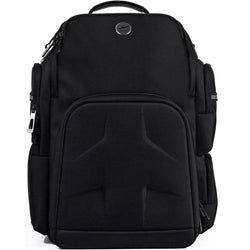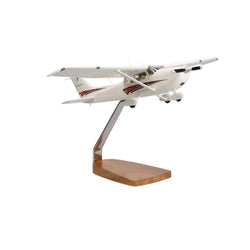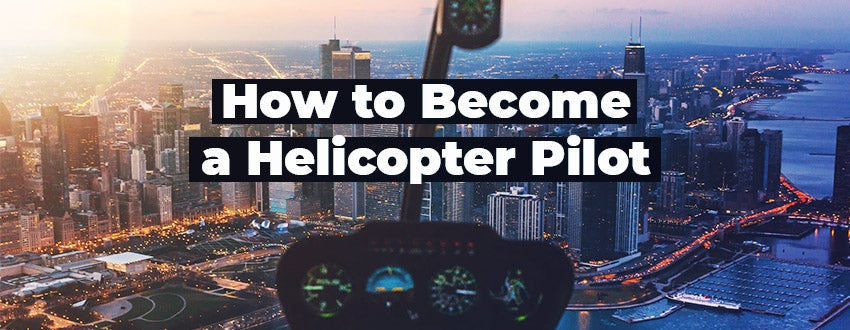Many pilots have a dream of owning their own plane, and in certain situations, it can definitely be a wise investment. But there are also times when renting a plane makes more sense.
Even pilots who already own their own aircraft may choose to rent for various reasons—whether it's to test out a new model or for a specific type of flight that their own plane isn't suitable for.
Naturally, the questions of "how do I rent a plane" and "how much does it cost" arise. Pilots looking to rent also want to know where to go and how to get the best deal on a rental.
In this article, we'll discuss all the important factors you need to consider before renting a plane.
Table of Contents
 Estimated Cost of Renting a Plane
Estimated Cost of Renting a Plane
Before we get into the cost of renting a plane, there are a few important factors to take into consideration. Aside from finding a suitable rental location, and being rated and current for the type of aircraft they intend to fly, pilots must also ensure they have non-owner insurance if they intend to fly the plane without a flight instructor onboard. It's important to keep all of these details in mind during the planning process for a rental flight.
Now, let's dive into each of these factors one by one!
 "Wet" or "Dry" Rental
"Wet" or "Dry" Rental
Aircraft rental rates can be either “wet” or “dry.”
- Wet: a "wet" rental rate has oil and fuel costs included in the quote
- Dry: with a dry rental, the renting pilot is responsible for the cost of oil and fuel in addition to the amount of the rental.
Check fuel pricing in the local area as it may be less expensive to opt for a dry rental and do your own refueling. On the other hand, you may be more comfortable knowing for sure what the final cost will be, in which case a wet rental could be a better choice.
Plane Rental Cost
Aircraft rental is a rate charged per hour, and you'll want to know how the facility determines this hourly rate, some places will charge it based on Hobbs time(meaning from the time the engine is turned on until it's turned off), some places charge based on Tacho time(based on when the RPM rises above a certain figure to when it stops) and some places will charge hourly based on the moment the aircraft is checked in on the flight schedule system to the time you check out and leave the facility.
Keep in mind these costs are just estimates, you will need to contact the location you wish to rent from for exact amounts.
Two-Seater Aircraft Costs
- $90-$125 - Typically older two-seaters such as the Piper Cub, Cessna 150, and Cessna 152.
4-Seat Single Engine Costs (Older Aircraft)
- $115-$185 - Usually these are aircraft such as the Cessna 172 Skyhawk and Piper PA-28 Cherokee.
4-Seat Single Engine Costs (Newer Aircraft)
- $125-$198 - Cessna 172 Skyhawk(especially if autopilot or newer avionics are on the aircraft), Diamond DA40.
6-Seat Single Engine Costs
- $220-$390 - Aircraft such as the Beechcraft Bonanza A36 and Piper Lance.
Multi-Engine Rental Costs
- $290-$500 - This cost tends to be for aircraft like the Piper Aztec and Beechcraft Baron.
 Renting vs Buying a Plane
Renting vs Buying a Plane
While owning a plane may be the Holy Grail for some pilots, renting should not be viewed as a consolation prize. There are plenty of reasons to consider renting over buying even if you have the funds to cover the purchase price of your plane.
Some of the benefits of renting a plane include:
1. Only Pay for Hours Flown
How many flight hours do you expect to log on to your plane each year? This is the first question to answer when considering whether you should buy or rent a plane.
If you are still in training, or you fly fewer than 100 hours a year, it typically makes more financial sense to rent. Once you hit the 100-hour mark, it is time to consider the other pros and cons of owning vs renting.
2. Options and Variety
One of the definite pros of renting an aircraft is the variety of options. Since you are not locked into a single aircraft, you have the freedom to choose the best plane for each type of flying you do.
You can optimize the size and functionality of your plane for each trip rather than buying a single plane that must be used for everything from solo flights to weekend trips with multiple passengers.
3. Try Before You Buy
If you are planning to buy a plane in the future but haven’t decided on a particular model just yet, renting a plane provides the perfect opportunity to fly the aircraft on your shortlist and to narrow down your selection.
4. No Ownership Costs
Ownership costs for aircraft add up quickly. Consider maintenance, hangar or tie-down fees, taxes, and insurance. Even if you do your own maintenance, that takes time.
With a rental aircraft, the maintenance, detailing, and routine inspections are done for you. You can simply show up and do your pre-flight. You also are not paying for storage on an aircraft between flights.
5. Avoid High Insurance Rates
Student pilots or pilots with low hours will receive higher insurance quotes than more seasoned pilots. If this applies to you, it may make sense to build hours in rental aircraft so that by the time you decide to purchase your own plane, your insurance rates will be lower.
6. Access to Instructors
New aircraft owners looking for instruction in their aircraft will have to locate a qualified instructor, whereas, with a rental, the rental company will provide an instructor to walk you through the specifics of the model you will be flying.
7. Not Grounded While Waiting to Purchase
Aircraft are not inexpensive purchases, although there are ways to buy a plane and save money. If your budget or logistics do not support buying the plane you want right now, or if you are still shopping around, renting offers a way to get up in the air and enjoy flying in the meantime.
 Where to Rent a Plane
Where to Rent a Plane
You have decided that renting a plane is right for you. Great. Now it’s time to consider your rental options. Planes can be rented from multiple locations including flight schools, fixed-base operators (FBOs), or private flying clubs. Consider the unique benefits of each type of facility and research which rental options are available in your desired location.
Flight Schools
The primary purpose of a flight school is to provide ground school and flight training to student pilots and certified pilots who are pursuing a higher certification level.
Flight schools typically have multiple types of trainer aircraft in their fleet along with certified flight instructors (CFIs) to train on each type of craft. Flight schools can be stand-alone programs or may be affiliated with a university.
Benefits of renting a plane from a flight school:
- Access to a wide variety of planes
- Access to flight training courses
- Option to rent aircraft for blocks of time
- Wet and dry rental options
Fixed-Base Operators (FBOs)
Fixed-Base Operators, or FBOs, are private jet terminal businesses that have authorization to operate out of commercial airports. FBOs provide a variety of services including aircraft rental, flight instruction, fueling, aircraft maintenance, hangar, tie-down, and parking.
Benefits of renting a plane from a fixed-base operator:
- Upscale services like lounges, catering, and WIFI
- Fueling services
- Both aircraft rentals and sales
- Ancillary services including rental cars and hotel discounts
Flying Clubs
A flying club is a non-profit co-op organization of pilots that provides affordable aircraft access to members. Flying clubs offer not only low member rates on rentals, but also access to additional services, flight training, and social functions like fly-ins or fly-outs.
Flying clubs extend their lowest rates to members, however depending on the club, non-members may be eligible to rent aircraft at higher rates.
Benefits of renting a plane from a flying club:
- Access to a variety of aircraft
- Social, and community interaction opportunities with other club members
- Eligible to receive training from anyone whom the airport has authorized to provide instruction
- Aircraft maintenance from other club members
How to Rent a Plane
Renting an aircraft is less complicated than you may think. Simply follow the below steps to find and secure an aircraft rental:
1. Locate an Aircraft Rental Facility
Decide what general geographic area you would like to fly out of, then locate possible rental facilities nearby. Remember to check for flight schools, FBOs, and flying clubs.
2. Learn the Standard Rental Rate Structure
Before comparing pricing from several locations, you should have a general idea of what to expect and how the rates can be structured. Expect to see hourly pricing breakdowns based on flight time.
Average hourly rates can range from $100 to $600 depending on the location and the type of aircraft. Some locations have daily minimum rental times of 3+ hours. Flying clubs will charge a membership fee to join or a higher hourly rate for non-members.
3. Select an Aircraft
Based on your flight needs and preferences, determine what model of aircraft you would like to request rental pricing for.
4. Request and Compare Rental Quotes
Doing a careful price comparison takes a little time, but this is where you can save money and get the best deal. Look for differences in hourly rates, daily minimums, flight instruction pricing, and whether the rental is wet or dry.
Remember that a slightly lower dry rate may end up being more expensive in the long run than a mid-range wet rate. Calculate your expected fuel costs and add them to the dry rate to get a final number that can be compared with wet rate quotes.
5. Choose a Rental Company and Aircraft
Select the company you want to rent from and decide which of their aircraft to rent. Confirm availability for your desired flight day and time.
6. Sign the Rental Contract and Any Additional Paperwork
Read, fill out, and sign the rental contract and any other required paperwork. Be prepared to provide copies of your photo identification, pilot’s certificate, and medical certificate. Decide if you wish to purchase flight instruction time as well.
7. Obtain Non-Owned Aircraft Insurance
Before heading out to the tarmac, ensure that you have current, valid aircraft renter’s insurance covering you for the aircraft you are renting.
Although some FBOs do offer renter’s insurance as part of the rental package, read the fine print and decide if you are comfortable with the coverage levels or whether you wish to purchase additional coverage.
Want to learn about different types of aircraft?
Now that you know the cost to rent a plane, learn about the different aircraft you could fly in!
Did you find this article helpful?
Do you think we missed anything important? Let us know in the comments below!







